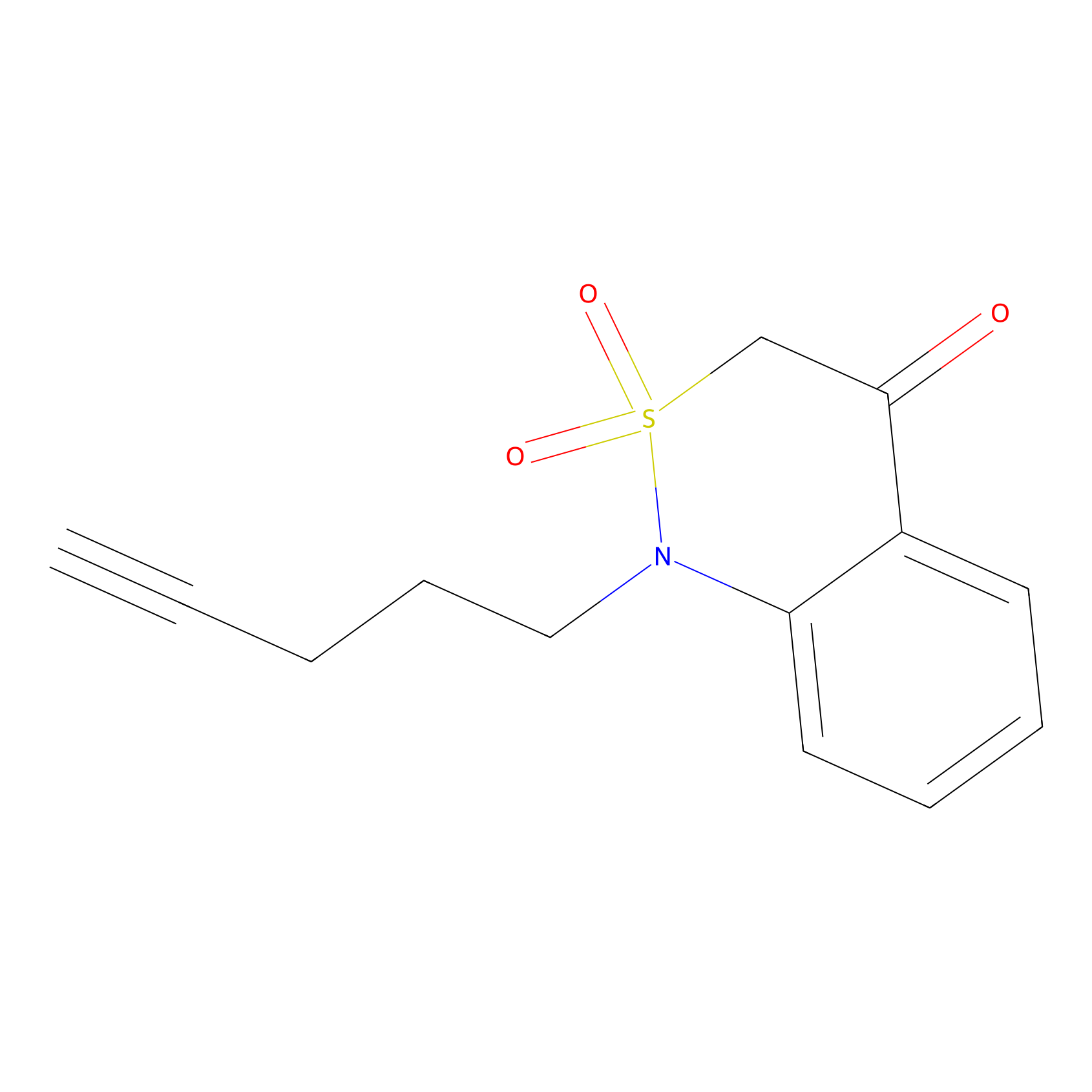Details of the Target
General Information of Target
| Target ID | LDTP01305 | |||||
|---|---|---|---|---|---|---|
| Target Name | Transient receptor potential cation channel subfamily A member 1 (TRPA1) | |||||
| Gene Name | TRPA1 | |||||
| Gene ID | 8989 | |||||
| Synonyms |
ANKTM1; Transient receptor potential cation channel subfamily A member 1; Ankyrin-like with transmembrane domains protein 1; Transformation-sensitive protein p120; p120; Wasabi receptor |
|||||
| 3D Structure | ||||||
| Sequence |
MKRSLRKMWRPGEKKEPQGVVYEDVPDDTEDFKESLKVVFEGSAYGLQNFNKQKKLKRCD
DMDTFFLHYAAAEGQIELMEKITRDSSLEVLHEMDDYGNTPLHCAVEKNQIESVKFLLSR GANPNLRNFNMMAPLHIAVQGMNNEVMKVLLEHRTIDVNLEGENGNTAVIIACTTNNSEA LQILLKKGAKPCKSNKWGCFPIHQAAFSGSKECMEIILRFGEEHGYSRQLHINFMNNGKA TPLHLAVQNGDLEMIKMCLDNGAQIDPVEKGRCTAIHFAATQGATEIVKLMISSYSGSVD IVNTTDGCHETMLHRASLFDHHELADYLISVGADINKIDSEGRSPLILATASASWNIVNL LLSKGAQVDIKDNFGRNFLHLTVQQPYGLKNLRPEFMQMQQIKELVMDEDNDGCTPLHYA CRQGGPGSVNNLLGFNVSIHSKSKDKKSPLHFAASYGRINTCQRLLQDISDTRLLNEGDL HGMTPLHLAAKNGHDKVVQLLLKKGALFLSDHNGWTALHHASMGGYTQTMKVILDTNLKC TDRLDEDGNTALHFAAREGHAKAVALLLSHNADIVLNKQQASFLHLALHNKRKEVVLTII RSKRWDECLKIFSHNSPGNKCPITEMIEYLPECMKVLLDFCMLHSTEDKSCRDYYIEYNF KYLQCPLEFTKKTPTQDVIYEPLTALNAMVQNNRIELLNHPVCKEYLLMKWLAYGFRAHM MNLGSYCLGLIPMTILVVNIKPGMAFNSTGIINETSDHSEILDTTNSYLIKTCMILVFLS SIFGYCKEAGQIFQQKRNYFMDISNVLEWIIYTTGIIFVLPLFVEIPAHLQWQCGAIAVY FYWMNFLLYLQRFENCGIFIVMLEVILKTLLRSTVVFIFLLLAFGLSFYILLNLQDPFSS PLLSIIQTFSMMLGDINYRESFLEPYLRNELAHPVLSFAQLVSFTIFVPIVLMNLLIGLA VGDIAEVQKHASLKRIAMQVELHTSLEKKLPLWFLRKVDQKSTIVYPNKPRSGGMLFHIF CFLFCTGEIRQEIPNADKSLEMEILKQKYRLKDLTFLLEKQHELIKLIIQKMEIISETED DDSHCSFQDRFKKEQMEQRNSRWNTVLRAVKAKTHHLEP |
|||||
| Target Type |
Successful
|
|||||
| Target Bioclass |
Transporter and channel
|
|||||
| Family |
Transient receptor (TC 1.A.4) family
|
|||||
| Subcellular location |
Cell membrane
|
|||||
| Function |
Receptor-activated non-selective cation channel involved in pain detection and possibly also in cold perception, oxygen concentration perception, cough, itch, and inner ear function. Shows 8-fold preference for divalent over monovalent cations. Has a central role in the pain response to endogenous inflammatory mediators and to a diverse array of irritants, such as allylthiocyanate (AITC) from mustard oil or wasabi, cinnamaldehyde, diallyl disulfide (DADS) from garlic, and acrolein, an irritant from tears gas and vehicle exhaust fumes. Acts also as an ionotropic cannabinoid receptor by being activated by delta(9)-tetrahydrocannabinol (THC), the psychoactive component of marijuana. Is activated by a large variety of structurally unrelated electrophilic and non-electrophilic chemical compounds. Electrophilic ligands activate TRPA1 by interacting with critical N-terminal Cys residues in a covalent manner, whereas mechanisms of non-electrophilic ligands are not well determined. May be a component for the mechanosensitive transduction channel of hair cells in inner ear, thereby participating in the perception of sounds. Probably operated by a phosphatidylinositol second messenger system.
|
|||||
| TTD ID | ||||||
| Uniprot ID | ||||||
| DrugMap ID | ||||||
| Ensemble ID | ||||||
| HGNC ID | ||||||
| ChEMBL ID | ||||||
Probe(s) Labeling This Target
ABPP Probe
| Probe name | Structure | Binding Site(Ratio) | Interaction ID | Ref | |
|---|---|---|---|---|---|
|
DBIA Probe Info |
 |
C104(1.60) | LDD2267 | [1] | |
|
BTD Probe Info |
 |
C192(0.94) | LDD2122 | [2] | |
Competitor(s) Related to This Target
References
